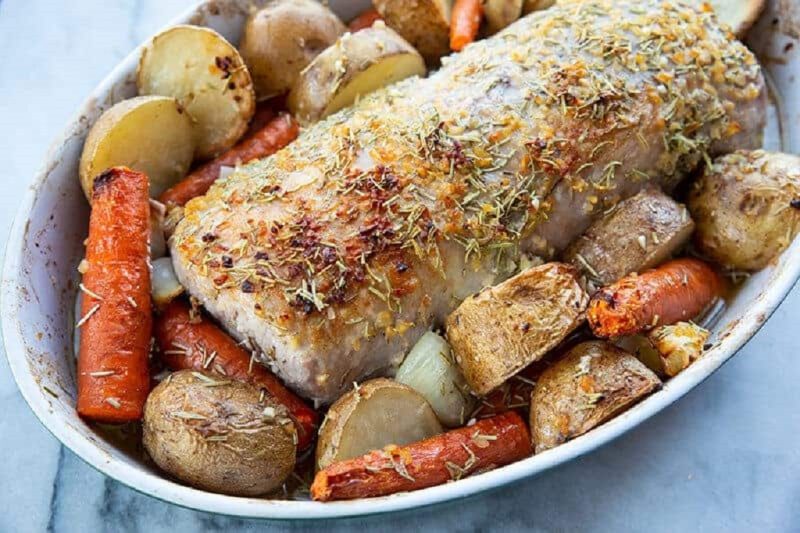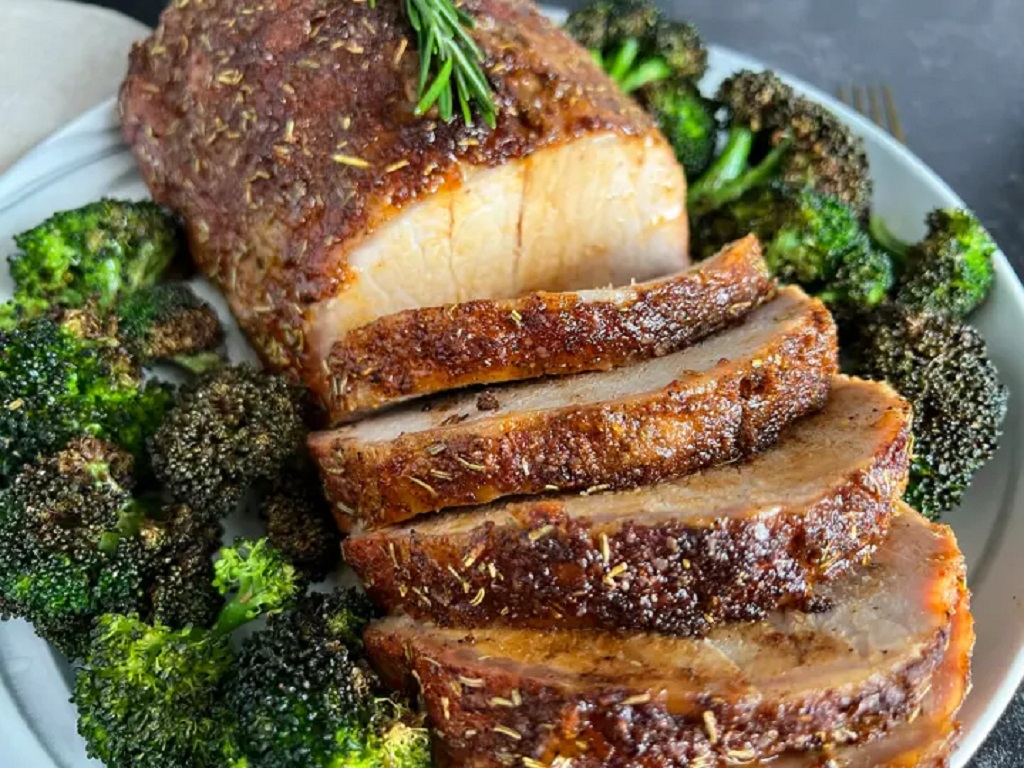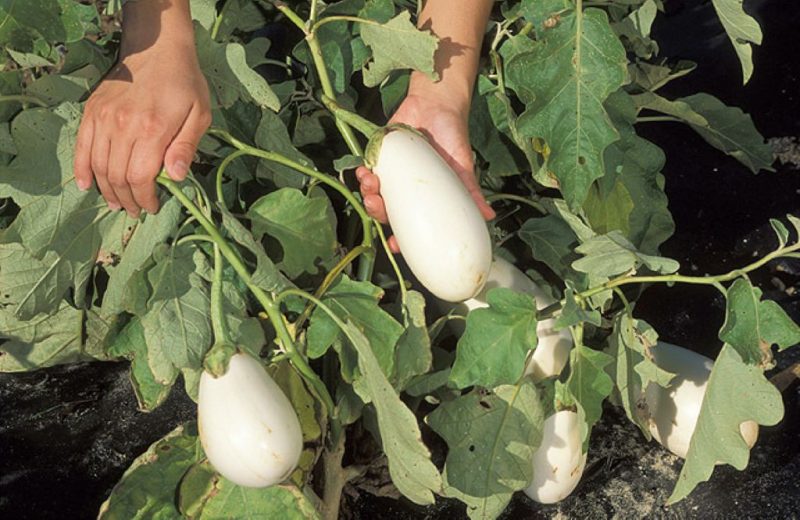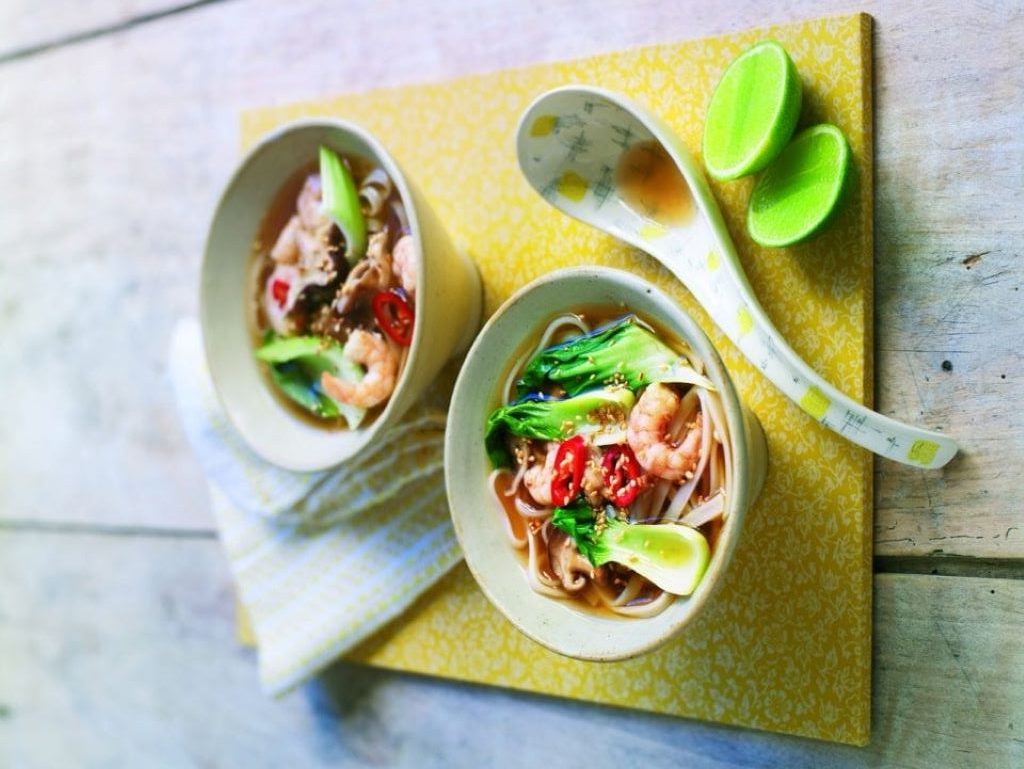To cook a boneless pork loin roast, preheat the oven, season the roast, sear it in a skillet, and then roast it until the internal temperature reaches 145°F. A perfectly cooked boneless pork loin roast can be a flavorful and satisfying addition to your meal.
Whether you are planning a cozy family dinner or hosting a special occasion, knowing how to prepare this delicious meat is essential. By following a few simple steps, you can create a tender and juicy roast that will impress your guests.
In this guide, we will walk you through the process of cooking a boneless pork loin roast to perfection. Let’s get started!
Choosing The Right Cut Of Pork
When it comes to cooking a boneless pork loin roast, particularly one that also needs to have food with kid appeal, selecting the right cut of pork is paramount. The quality and freshness of the pork significantly influence the taste and tenderness of the final dish, making it crucial to choose the best possible option. In this section, we will explore the critical importance of freshness and quality in selecting pork, which can make a noticeable difference in your cooking results. We’ll also examine the differences between boneless and bone-in cuts of pork, discussing how each type can affect the cooking process and the overall enjoyment of the meal, especially for children. Understanding these nuances will help you make informed decisions that lead to a delicious and kid-friendly pork loin roast.
Freshness And Quality
Freshness is crucial when it comes to pork. Look for meat that is bright pink, with a small amount of marbling. Avoid cuts that are pale or have a strong smell, as these are signs of poor quality or spoilage. When buying from a butcher, ask about the origin of the pork and ensure it has been properly stored.
Quality is also important. Choose pork labeled as “USDA Prime” or “Choice” for the best quality. These designations indicate that the meat has met certain standards in terms of tenderness, juiciness, and flavor. While these cuts may be slightly more expensive, they are worth the investment for a delicious and tender pork loin roast.
Boneless Vs. Bone-in
One of the main decisions you’ll need to make when choosing a pork loin roast is whether to go boneless or bone-in. There are a few factors to consider when making this choice:
- Convenience: If you prefer a neater and easier carving process, boneless pork loin roast is a great option. It allows for more precision when slicing and serving.
- Flavor: Some people believe that cooking meat with the bone-in enhances the flavor. While this is subjective, the bone can add richness and depth to the dish.
- Cooking Time: Boneless pork loin roast typically cooks faster than bone-in cuts. This can be an important factor if you’re short on time or prefer a quicker cooking process.
Ultimately, the choice between boneless and bone-in comes down to your personal preferences and the specific recipe you are using. Consider both convenience and flavor when deciding which option is best for you.
Preparation And Seasoning
Cooking a boneless pork loin roast, particularly when preparing it as a sous vide pork roast, necessitates meticulous preparation and the selection of the right combination of seasonings to fully enhance the meat’s flavor. By adhering to these straightforward steps for trimming and tying the roast, as well as crafting a flavorful seasoning and marinade, you can guarantee a delectable and succulent sous vide pork roast that is sure to impress your family and friends. This method allows the pork to cook evenly and absorb the marinade deeply, resulting in a tender, flavorful dish. Following these guidelines will help you master the art of preparing a pork roast that stands out in both taste and texture, making your culinary creation a memorable one.
Trimming And Tying
To start, it’s important to trim any excess fat from the surface of the pork loin roast. Excess fat can prevent the seasoning from properly penetrating the meat. Use a sharp knife to carefully remove any unwanted fat, leaving a thin layer to add flavor and moisture during the cooking process. Then, it’s time to tie the roast to maintain its shape and aid in even cooking. Use kitchen twine to tightly secure the roast, ensuring it remains intact throughout the cooking process. This will result in a beautifully cooked and presentable pork loin roast.
Seasoning And Marinade
Now that your pork loin roast is properly trimmed and tied, it’s time to prepare the seasoning and marinade. A simple yet flavorful combination of herbs and spices can take your roast to the next level. Start by creating a dry rub that consists of ingredients such as salt, black pepper, garlic powder, and paprika. Apply the dry rub generously all over the surface of the roast, making sure to press it into the meat to enhance the flavor. Allow the roast to sit at room temperature for about 30 minutes, allowing the flavors to meld together.
- For a more intense flavor profile, consider marinating the roast overnight in a mixture of olive oil, soy sauce, minced garlic, and fresh herbs.
- This will infuse the meat with a deep and savory taste that will leave your guests wanting more. When it comes time to cook the roast, be sure to remove any excess marinade, as it can burn and result in a bitter taste.
- Instead, you can brush it with the reserved marinade during the cooking process to add moisture and additional flavor.
With the right preparation and seasoning, your boneless pork loin roast is ready to be cooked to perfection. Whether you choose to roast it in the oven or grill it outdoors, the result will be a delicious and tender pork roast that will be the star of your next meal.
Cooking Methods
When it comes to cooking a boneless pork loin roast, there are various methods you can use to achieve a delicious and succulent result. The choice of cooking method can greatly impact the flavor and texture of the pork loin, so it’s important to consider the different options available. Here, we explore two popular cooking methods: oven roasting and grilling or smoking, each of which offers its unique advantages and nuances.
Oven Roasting
Oven roasting is a classic and reliable method for cooking a boneless pork loin roast. This method involves cooking the pork in a preheated oven at a specific temperature for a certain period, resulting in a tender and flavorful roast. Here’s a simple guide to oven-roasting a boneless pork loin roast:
- Preheat the oven to 375°F.
- Season the pork loin with herbs, spices, and olive oil.
- Place the pork loin in a roasting pan and cook in the oven for 20 minutes per pound, or until the internal temperature reaches 145°F.
- Let the roast rest for at least 3 minutes before slicing and serving.
Oven roasting is ideal for those who prefer a hands-off approach to cooking, as it allows the pork loin to cook evenly without constant supervision.
Grilling Or Smoking
Grilling or smoking a boneless pork loin roast adds a unique smoky flavor and charred exterior to the meat, creating a delicious contrast of textures. Here’s how to grill or smoke a boneless pork loin roast:
- Prepare the grill or smoker for indirect heat at around 250-275°F.
- Season the pork loin with dry rub and let it sit at room temperature for 30 minutes.
- Place the pork loin on the grill or in the smoker and cook for 1.5-2 hours, or until the internal temperature reaches 145°F.
- Allow the roast to rest for several minutes before slicing and serving.
Grilling or smoking a pork loin roast is perfect for those who enjoy the unique smoky flavor and charred crust that these methods impart on the meat.
Monitoring Temperature And Time
To cook a boneless pork loin roast, it’s crucial to monitor the temperature and time. Use a meat thermometer to ensure the internal temperature reaches 145°F, while the total cooking time typically varies from 20 to 30 minutes per pound at 350°F.
Keep a close eye on the roast’s progress to achieve the perfect doneness.
Cooking a boneless pork loin roast to perfection requires careful monitoring of temperature and time. By using a meat thermometer and allowing the roast to rest, you can ensure that it is juicy, tender, and cooked to the ideal temperature.
Use Of Meat Thermometer
Using a meat thermometer is essential for cooking a boneless pork loin roast to perfection. This handy tool allows you to monitor the internal temperature of the roast, ensuring that it is cooked all the way through without being overdone. Insert the thermometer into the thickest part of the roast, making sure to avoid touching the bone to get an accurate reading.
To achieve the perfect pork loin roast, the internal temperature should reach 145°F (63°C). This is the recommended safe temperature according to the United States Department of Agriculture (USDA). By using a meat thermometer, you can accurately gauge when to remove the roast from the oven, preventing it from drying out or being undercooked.
Resting Period
Allowing the pork loin roast to rest after cooking is an essential step that should not be skipped. During the resting period, the juices redistribute throughout the meat, resulting in a tender and juicy roast. This simple yet crucial step can make a significant difference in the outcome of your cooking. Once you have reached the desired internal temperature of 145°F (63°C), remove the roast from the oven and tent it loosely with aluminum foil. Let it rest for at least 3 minutes to allow the juices to settle and the flavors to meld together.
Resting the pork loin roast also helps to make it easier to carve. Cutting into the roast immediately after cooking can cause the juices to escape, resulting in a drier and less appetizing final product. Patience is key here, as a brief resting period will help you achieve optimal tenderness and flavor. In summary, monitoring the temperature of your boneless pork loin roast with a meat thermometer and allowing it to rest after cooking are essential steps to ensure a succulent and perfectly cooked roast.
By following these guidelines, you can confidently prepare a mouthwatering roast that will impress your family and friends.
Serving And Enjoying
Learn how to cook a delicious boneless pork loin roast with our simple step-by-step guide. Impress your guests with a perfectly seasoned and moist roast that will have everyone coming back for seconds.
Now that you have successfully cooked a delicious boneless pork loin roast, it’s time to savor and enjoy your culinary masterpiece. The way you slice and present the roast can make a significant impact on the overall dining experience. Additionally, choosing the right accompaniments to complement the flavors of the roast can elevate the meal to new heights. In this section, we will cover the art of slicing and presentation as well as suggest some delightful accompaniments that will complete your pork loin roast feast.
Slicing And Presentation
When it comes to showcasing your boneless pork loin roast, slicing it properly plays a crucial role. Follow these simple steps to ensure each slice is tender and visually appealing:
- Allow the roast to rest. Give the roast at least 10 minutes to rest before slicing. This allows the juices to redistribute throughout the meat, resulting in a juicier and more flavorful roast.
- Use a sharp knife. A sharp knife ensures clean and smooth slices. Take your time and apply gentle pressure to create even cuts.
- Slice against the grain. Cutting the roast against the grain will result in slices that are more tender and easier to chew.
When it comes to presentation, remember that we eat with our eyes first. Here are a few tips to make your boneless pork loin roast visually appealing:
- Arrange the slices neatly on a platter or individual plates. This creates an enticing display and makes it easier for guests to serve themselves.
- Garnish with fresh herbs or citrus slices. Adding a vibrant touch of color will make the dish even more appetizing.
- Consider serving the roast with a flavorful sauce on the side. This not only enhances the taste but also adds an element of elegance to the presentation.
Accompaniments
To complete your boneless pork loin roast meal, pair it with delicious accompaniments that complement the flavors of the dish. Here are some ideas to inspire you:
| Accompaniment | Description |
| Roasted Vegetables | Colorful and caramelized vegetables, such as carrots, Brussels sprouts, and potatoes, add a pleasant contrast to the pork loin roast. |
| Herb-Roasted Potatoes | Tender and crispy potatoes seasoned with aromatic herbs are the perfect side dish to complement the flavors of the roast. |
| Creamy Mashed Potatoes | Smooth and buttery mashed potatoes provide a comforting and creamy element to balance the richness of the pork loin roast. |
| Apple-Infused Sauerkraut | Tangy sauerkraut with a hint of sweetness from the apples pairs exceptionally well with the savory flavors of the roast. |
| Crusty Bread | A warm and crusty bread loaf is perfect for sopping up the flavorful juices from the pork loin roast. |
Choose one or more accompaniments from the list above, or get creative and experiment with your combinations. The key is to select sides that enhance the flavors and create a well-rounded meal. Finally, don’t forget to enjoy the fruits of your labor. Share this delightful dish with your loved ones and savor each bite, appreciating the time and effort you put into cooking a boneless pork loin roast that is both delicious and visually impressive.
Frequently Asked Questions On How To Cook A Boneless Pork Loin Roast
How Long Do You Cook A Boneless Pork Loin Roast?
Cook a boneless pork loin roast for about 20 minutes per pound at an oven temperature of 350°F. Use a meat thermometer to ensure the internal temperature reaches 145°F. Let it rest for 3-5 minutes before slicing.
What Temperature Do You Cook A Boneless Pork Loin Roast?
Preheat your oven to 350°F to cook a boneless pork loin roast. This temperature allows for even cooking and ensures that the roast reaches a safe internal temperature of 145°F.
How Do You Season A Boneless Pork Loin Roast?
Season a boneless pork loin roast by rubbing it with a mixture of herbs and spices. Combine salt, pepper, garlic powder, and herbs like rosemary or thyme. Rub the mixture all over the roast before cooking for delicious flavor throughout.
Conclusion
Mastering the art of cooking a boneless pork loin roast opens up a world of delicious possibilities for your meal planning. With some basic techniques and a little creativity, you can create mouthwatering dishes that will impress your family and guests.
Indulge in the spirit of compassionate feasting with the “Best Vegan Thanksgiving Desserts to Make Your Holiday Feast Complete.” So, put your apron on and get ready to savor the amazing flavors of a perfectly crafted plant-based dessert. Cheers to great cooking and a cruelty-free.






